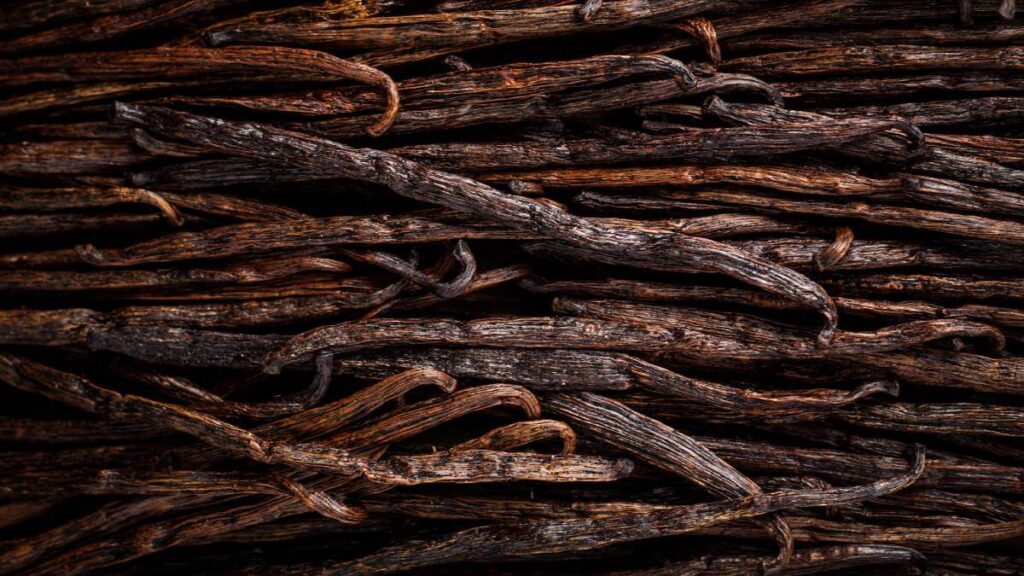Vanilla is a staple in kitchens, but did you know it is one of the most fascinating ingredients you can ever use?
So before you tip vanilla extract or essence into your custard or cake batter, take a moment to discover what makes it so interesting.
Sit back, because it involves lying Frenchmen, slavery, small bees and one of the prissiest plants known to man.
Vine time
Vanilla pods are the fruit of an orchid and are, in fact, the only edible fruit of the orchid family.
One reason vanilla is so expensive is the vanilla orchid vine is one of the fussiest plants on earth and I don’t know how it has even survived thus far.
It is native to south-east Mexico and attempts to relocate it to other countries were initially met with dismal failure due to the exacting conditions it requires to live and pollinate.
The following are just a few requirements for this high maintenance plant.
- It prefers to be grown 10-20 degrees north or south of the equator.
- Its ideal climate is 1500-3000ml of rain with a humidity of 80 per cent.
- The soil should be loose, well drained and preferably on a slight slope.
- As it’s a vine, it needs to be grown on a support, but all plants must be grown under 50 per cent shade.
- If you are growing it on a tree, the tree must be planted at least three months before sowing the cuttings,
And on it goes. However, the biggest impediment to early attempts to grow vanilla outside of Mexico was that no-one knew how it was pollinated.
The buzz around vanilla
Enter the orchid bee. Turns out a wee Mexican bee in the Euleama family was vanilla’s only pollinator, so all those early earnest endeavours to get vanilla to grow across the world were destined to fail, and they did.
Horticulturalists in the 19th century grew beautiful vines, but there was never any fruit.
Those who love vanilla can direct their thanks to a 12-year-old slave called Edmond Albius. In 1841, while living on the island of Reunion, he discovered a way to artificially pollinate vanilla using a sliver of bamboo about the size of a toothpick.
As it was the way of things, a noted French botanist named Jean Michel Claude Richard tried to take the glory for Albius’s discovery, but his claims were eventually discredited.
As is the way of things, despite being responsible for the explosion in vanilla cultivation, and consequently the wealth that followed, Edmond Albius died in poverty.
Anyway, Albius’s discovery meant vanilla could now be grown elsewhere, but the labour-intensive method has barely changed since that time.
Fussy flowers
Adding to the issue is the problem that vanilla flowers bloom for less than 24 hours and must be pollinated within 12 hours of opening, preferably within the first few hours after the flower opens.
See what I mean? They are the prima donnas of the plant world, no wonder they are so expensive.
Anyway, you’ve grown your plant and harvested your bean (but not really a bean), so you can just sell it now right? No, now there is months of prep to get it into that beautiful black, fragrant bean.
There are four basic steps: killing, sweating, slow drying and conditioning.
Killing fields
Killing refers to the process where vegetable tissue at the top of the pod is destroyed, which prompts enzyme reactions that gives the vanilla bean its distinctive flavour. You can kill the tissue by heating, freezing, scratching it, or exposing it to direct sunlight.
Sweating involves stacking the fruits together in fabric and keeping them at a steady temperature between 45-65°C. A spa day for vanilla, if you like. The fruit is brown by this point but not sufficiently dehydrated, which brings us to …
Drying, where the fruit is exposed to the sun under some strict conditions and then conditioning involves storing the fruit in boxes for up to six months to develop the flavour.
Now can you understand why they sell for about $5 each, minimum.
In fact the trade is so lucrative, and often conducted in poorly regulated countries, criminal activity has sprung up around the industry.
So, there’s just a fraction of the vanilla bean story, and it’s not very vanilla at all.
Do you use vanilla often? Has the price put you off? Why not share your favourite way to use vanilla in the comments section below?
Also read: Classic Vanilla Slice

